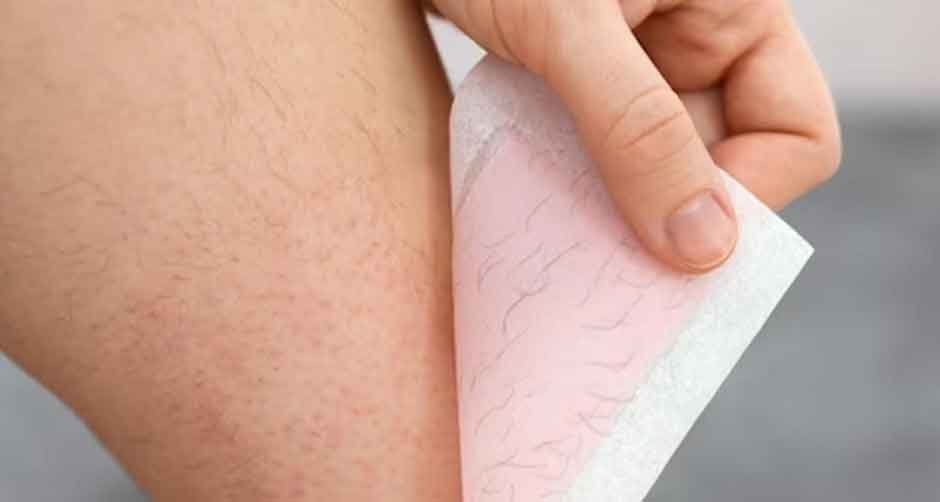Smooth, hair-free skin is a goal for many, sparking the question – how long does waxing last and does it outlast shaving and other hair removal methods? This deep dive explores the intricacies of waxing versus shaving, from hair growth cycles to technique, that influence which yields longer-lasting results.
Waxing 101: The Science of Hair Removal from the Root
Waxing’s renown comes from extracting hair from the root for smoother, longer-lasting outcomes versus shaving’s surface-level cut. But what does this mean?
Hair anatomy is key. Within the skin, each strand grows from a hair follicle, which surrounds the entire hair root to secure it in place. The bottom of the follicle contains the papilla, where cells divide to stimulate growth. During waxing, the strip adheres to hair above the skin, then is pulled swiftly in the direction of growth. This removes the entire hair all the way down to the papilla.
With the root extracted, new hair regrowth is delayed. Hair goes through a growth cycle of three phases: anagen (active growth), catagen (transitional/stops growing) and telogen (resting/shedding). Different body parts have varying cycle lengths. Brows take 4-6 months, while the scalp is 2-7 years. Waxing removes hairs in anagen, forcing them back into the cycle from the beginning. They must fully rest then restart growth, which is why waxing lasts weeks versus shaving’s days.
Now let’s compare to shaving, which cuts hair at skin level rather than extracting it. With the root still intact, growth resumes in days as strands transition from telogen to anagen quicker. The hair remains anchored in the follicle the entire time versus being completely removed by waxing.
Clearly, getting to the root of the issue gives waxing an advantage for longevity! But proper technique is equally crucial…
Mastering Waxing Technique – The Secret to Longer Lasting Results
Waxing’s potential relies on technique as much as biology. Done correctly, the entire hair and root are removed smoothly and efficiently, delaying regrowth for weeks. Done sloppily, hairs break off with roots remaining, causing stubble to resume faster, like shaving. What makes for good technique?

- Proper wax temperature – Too cool and it won’t spread smoothly. Too hot risks burns and breaking hair. Ideal texture thinly coats each strand.
- Taut skin – For efficient root removal, skin must be held firmly to open follicles and provide a smooth surface for hair extraction in the direction it grows.
- Speed and motion – Quick, smooth motions in the direction of hair growth allow optimal hair removal with minimal pain.
- Repeating if needed – Going over areas repeatedly ensures no hairs are missed and are fully removed.
- Soothing care – Applying pressure, cold air and soothing creams afterward help close follicles and pores to prevent infection and ingrown hairs.
Developing proper technique requires extensive training and experience. Seek out certified estheticians who specialize in waxing with excellent reviews. A skilled, steady hand makes all the difference for waxing that lasts versus temporary shaving.
Decoding How Hair Type and Texture Impacts Waxing Duration
Now that we’ve covered waxing basics and technique, let’s decode how your unique hair characteristics affect results longevity. These factors all relate to how easily hair can be fully extracted from the root during waxing to delay regrowth.
- Texture – Fine, thin hair offers less resistance than coarse, thick strands when gripped by wax for removal. This allows for longer lasting smoothness.
- Length – Shorter hair is easier to remove fully compared to longer strands that are more likely to break off. Maintain regular waxing as hair regrows to maximum 1⁄4 inch length for best results.
- Density – Sparser hair distribution allows better grip than dense, packed follicles which offer more resistance and risks incomplete removal.
- Straight vs. curly – Straight hair is extracted root to tip without bending or resistance. Tight curls may untwist during removal, breaking the hair before the root is fully out.
- Body area – Bikini areas, eyebrows and legs have finer, sparser hair that removes easier for longer smoothness. Coarser back and chest hair proves more challenging.
Understanding your unique hair landscape helps determine how long waxing results can realistically last. Schedule maintenance accordingly, every 3 weeks for coarse regrowth, or 4-6 weeks for finer hair. While waxing has limits, it still surpasses shaving’s duration.
How Age, Hormones and Ethnicity Influence Hair Regrowth
Beyond texture, age, ethnicity and hormones further dictate waxing longevity. Here’s how:
– Puberty causes increased androgen hormones that stimulate heavier, oilier hair growth. Young teens may see faster regrowth.
– Later adulthood brings hormone shifts with menopause slowing hair production as estrogen declines. Regrowth may take longer.
– DHEA and testosterone levels drive thicker, rapid hair growth in men. Male facial and body hair responds faster after waxing.
– Genetics impact hair texture and growth rates. Those of Asian descent often have the finest, slowest growth for longest waxing results.
– Middle Eastern and Mediterranean ethnicities tend toward dense, fast-growing hair. African descent produces tightly curled strands requiring special techniques.
– Conditions like PCOS cause elevated testosterone driving excess facial and body hair in women. This leads to shorter waxing duration.
While certain products or hormones can be adjusted to help mitigate genetic hair growth, waxing results still vary across age, gender and ethnicity based on biological factors.
How Waxing Regrowth Timelines Shift By Body Area
Now that we have covered hair traits, why does waxing longevity differ across body zones? The answer stems from varying hair growth cycles.
– Brows – 4-6 months. Slower rate allows waxing to last 4-6 weeks.
– Armpits – 4-6 weeks. Sweat and friction lead to faster turnover. Stubble reappears in 2-3 weeks.
– Arms & legs – 2-3 months. Average cycle supports 3-5 week smoothness from waxing.
– Bikini – 4-5 weeks. Sensitive region and irritation speeds regrowth. Results last 2-3 weeks.
– Back & chest – 3 months. Coarse, thick hair resists removal but long cycle allows 4-6 hair-free weeks.
– Face – The combination of hormone activation and coarseness causes facial hair to regrow the fastest – within 2-3 weeks for most men.
Assessing your target areas provides realistic expectations for waxing longevity. Schedule maintenance sessions accordingly.
The Skinny on Exfoliation, Skin Care and Other Longevity Factors

To further extend waxing’s effects, proper exfoliation and skin care optimize results.
Here’s how:
– Exfoliate 2-3 times a week – Sloughing off dead cells helps prevent ingrown hairs and allows new growth to emerge smoothly.
– Moisturize daily – Keeping skin hydrated helps strengthen and protect follicles while preventing sensitivity and bacteria.
– Avoid sun exposure – UV rays stimulate melanin, causing faster regrowth. Stay protected.
– Time between waxing – Wait 4 weeks for legs/arms, 2-3 weeks for bikini area and facial waxing allows optimal hair length and cycle timing.
– Allow 24-48 hour rest – Avoid activities causing sweating directly after waxing to prevent irritation and infection.
– Soothing care after – Applying cold compresses, aloe vera and hydrocortisone cream helps avoid bumps and sensitivity.
Caring for skin properly pre and post-waxing helps maximize smoothness and minimize discomfort. Consult your esthetician for a recommended regimen personalized for your needs.
The Potential for Permanent Hair Reduction – Fact or Fiction?
With consistently repeated waxing over time, could permanent hair reduction be possible? Potentially yes – under the right circumstances.
Here’s how it works: with frequent and proper waxing technique, the papilla can become damaged from constant root removal. This impairs its ability to trigger new growth. Regrowth may gradually slow and even fully stop in repeatedly waxed areas.
However, this outcome depends greatly on your individual biology and consistency. For those with the thickest, most resilient hair, permanent reduction may never occur. Maintenance waxing will be required indefinitely. But the potential exists, giving waxing an advantage over lifelong shaving.
Maximizing Waxing’s Longevity – The Takeaway
In summary, waxing’s ability to remove hair entirely from the root gives it the edge for longer lasting smoothness versus shaving’s haircut at the skin. Proper technique, skin prep and aftercare further extend waxing’s duration. Variables like hair type, age and ethnicity impact results as well.
While shaving requires daily maintenance, waxing on the ideal schedule provides weeks of stubble-free skin for most. With diligent care, waxing gives silky, hair-free skin beyond a shadow of a doubt. For those seeking reliable, enduring hair removal, waxing is undoubtedly the way to go for unparalleled longevity.



